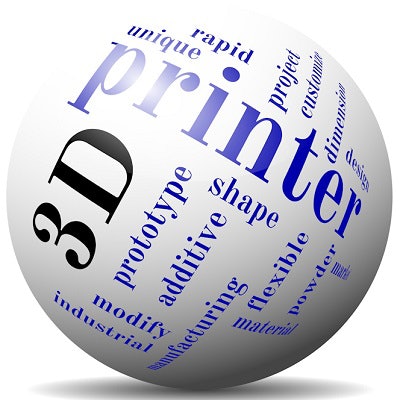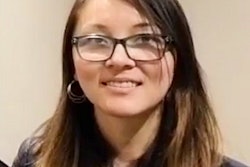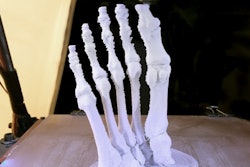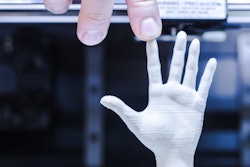
SAN FRANCISCO - Start-ups are hard enough in any field, but medical device start-ups -- including 3D printing hopefuls -- require extra helpings of dedication and persistence to succeed, according to experts speaking April 20 at the 3DHeals 2017 conference.
Advice about entrepreneurship in 3D printing was dispensed throughout the day from people who had mostly succeeded in their own goals of establishing firms that offer 3D printing services and products that are now in demand. The products include everything from customized breathing masks for sleep apnea patients to replacement limbs for amputees to engineered biological tissues for drug testing.
Dr. Yan Chow, who served as national chief innovation medical officer with Kaiser Permanente for eight years before joining the pharmaceutical firm Amgen, spoke about 3D start-ups from the viewpoint of an equipment buyer interviewing a new technology developer looking for customers. Based on his experience, Chow said he had identified some common patterns and problems with the developers' approaches.
Getting the question right
"What problem are you trying to solve?" is a key question for entrepreneurs, Chow said. "In the 2,000 start-ups we saw, a lot of them didn't know what problem they were trying to solve."
 Dr. Yan Chow at 3DHeals 2017.
Dr. Yan Chow at 3DHeals 2017.After all, settling on the right problem is a huge part of the calculus that the enterprise buyer goes through.
"We had tons of start-ups coming to us and saying, 'What problem can we solve for you?' " That's the wrong question to ask, he said.
In a positive trend, in Chow's eight years at Kaiser, the composition of start-up teams he encountered changed from those made up exclusively of engineers to firms that had brought healthcare professionals on board. When healthcare people become part of the equation, they come in saying, "Here is the evidence, and here's the problem I want to solve," he said.
3D printing brings a broad array of timing issues, Chow said. One issue of timing is whether the buyer is ready to be sold on any technological innovation. Many large healthcare organizations are still looking for the return on their massive investment in electronic health records, for example. For whatever reason, there may not be a willingness for new solutions right now. And there's more to understanding the customer.
Showing your prowess
The team behind the start-up is important, and it needs to show its healthcare prowess. Are there critical gaps in the team makeup? Maybe the start-up boasts a great team that includes a medical school professor and an engineer from a top-flight university such as Stanford -- but its potential customer comes from the University of California, Berkeley.
You can't know your customer too well, Chow said. And human skills are extremely important for success.
"When you go to meet somebody, a lot of it is decided in 10 minutes," he said. "Do they like you and trust you?"
The start-up won't have or be able to afford all the expertise it needs. But does it have resources in place to scale up quickly, if needed?
Evidence matters
Technology buyers also ask whether there is evidence to back up claims. Maybe your tiny firm hasn't found a sponsor for a clinical study yet; however, the executive team must prepare for the question by doing its homework. That means at least talking to potential study sponsors and taking definitive steps toward getting evidence to support the product.
Evidence matters "because in healthcare the stakes are very high -- life or death, in fact -- and the regulatory barriers are formidable," Chow said. "Many healthcare start-ups underestimate the barriers. New technology poses a couple of problems: one, that there's no track record, and two, that there's no agreement on what constitutes success and how it should be measured. These are not small issues."
Is your product HIPAA compliant? Do you have 510(k) clearance from the U.S. Food and Drug Administration (FDA) to demonstrate your product's safety and efficacy? With regard to electronic records and signatures, are you compliant with FDA Title 21, Code of Federal Regulations (CFR) Part 11? Are you protecting your patents at every stage of product development?
Along with the layers of formal regulation are the informal ones, such as community standards of practice and peer-reviewed literature, that cannot be overlooked, Chow said.
Finally, who's going to pay for your technology? Has the company lined up insurers ready to reimburse for its use pending 510(k) clearance? Offering an example from the pharmaceutical industry, Chow said one manufacturer is offering a risk-sharing scheme, wherein patients and payors can get their money back if a drug doesn't work.
What are other ways to reduce downside risk? Prepare the answers before the pitch, he said.
Find the star players
As for team building, panelist Leslie Karpas, founder and CEO of custom medical 3D design firm Metamason, said an important win for her firm was securing a principal at a leading healthcare firm to serve as medical director.
This individual "knows all of the major players in the space, all the major points of sale, and all the former executives from all the big companies that are in retirement mode that we're now trying to hit up for funding," he said.
Another key hire was a former director of clinical affairs from another large firm, who is writing Metamason's clinical protocols.
"You can hang yourself with clinical protocols really quickly if you're not careful," Karpas said. "We ended up scrapping ours and rewriting them a number of times because once you are in a trial, whatever you test is what you get. So if you don't frame the questions in a really neutral way, you can try to prove something that's unprovable, even though there are a lot of other quality elements to what you're doing, and then trap yourself. "
How does a small start-up face the monumental tasks of sorting out regulations, building a team, and trying to obtain financing?
Get a doctor on your team who has a friendly relationship with an institutional review board (IRB) and is able to get approval to try prototypes in patients, Karpas said. Having a doctor who knows doctors who can help in arranging prototype testing can save a lot of time.
Your team should also have an experienced grant writer, which can be contracted out, and your doctor should be experienced in writing clinical trial proposals, preferably from an academic setting, Chow said. This is important because the protocols for the trial, once submitted, are set in stone.
"For us, we had to look at what we needed and what we could afford. We needed a lot, and we had almost nothing," said Dr. Chris Hart, founder of Australia-based 3D firm Oventus.
Spending precious money on consultants with network contacts can be a smart move if they save you time and effort -- and you can take their advice or ignore it, Hart said. Spending on intellectual property patents can also be a wise use of scarce resources. When you need far more than you have, you can also hand out stock options to get the people you need.
All of the panelists agreed that very small firms can save a lot of grief by partnering with a big player.



















